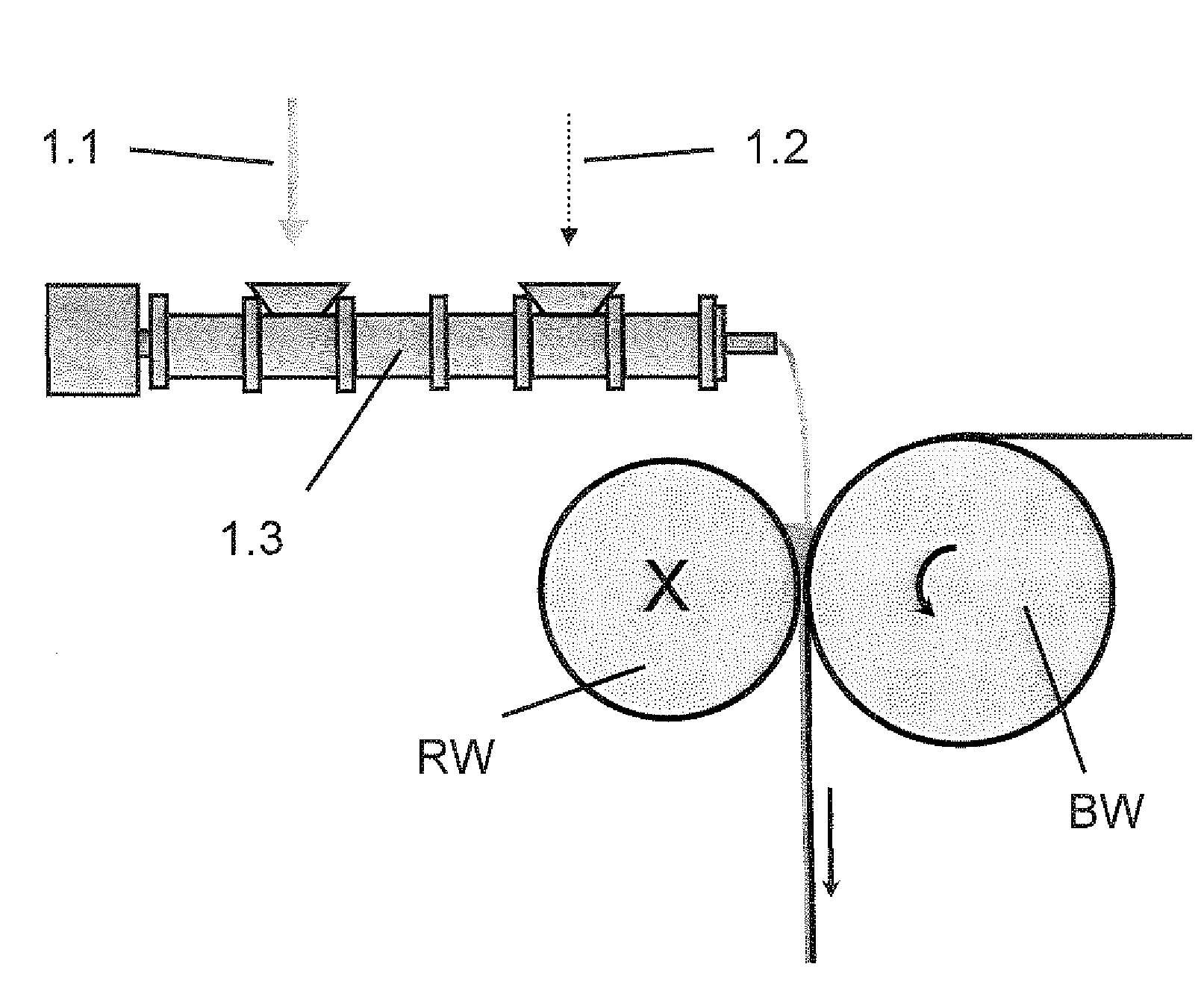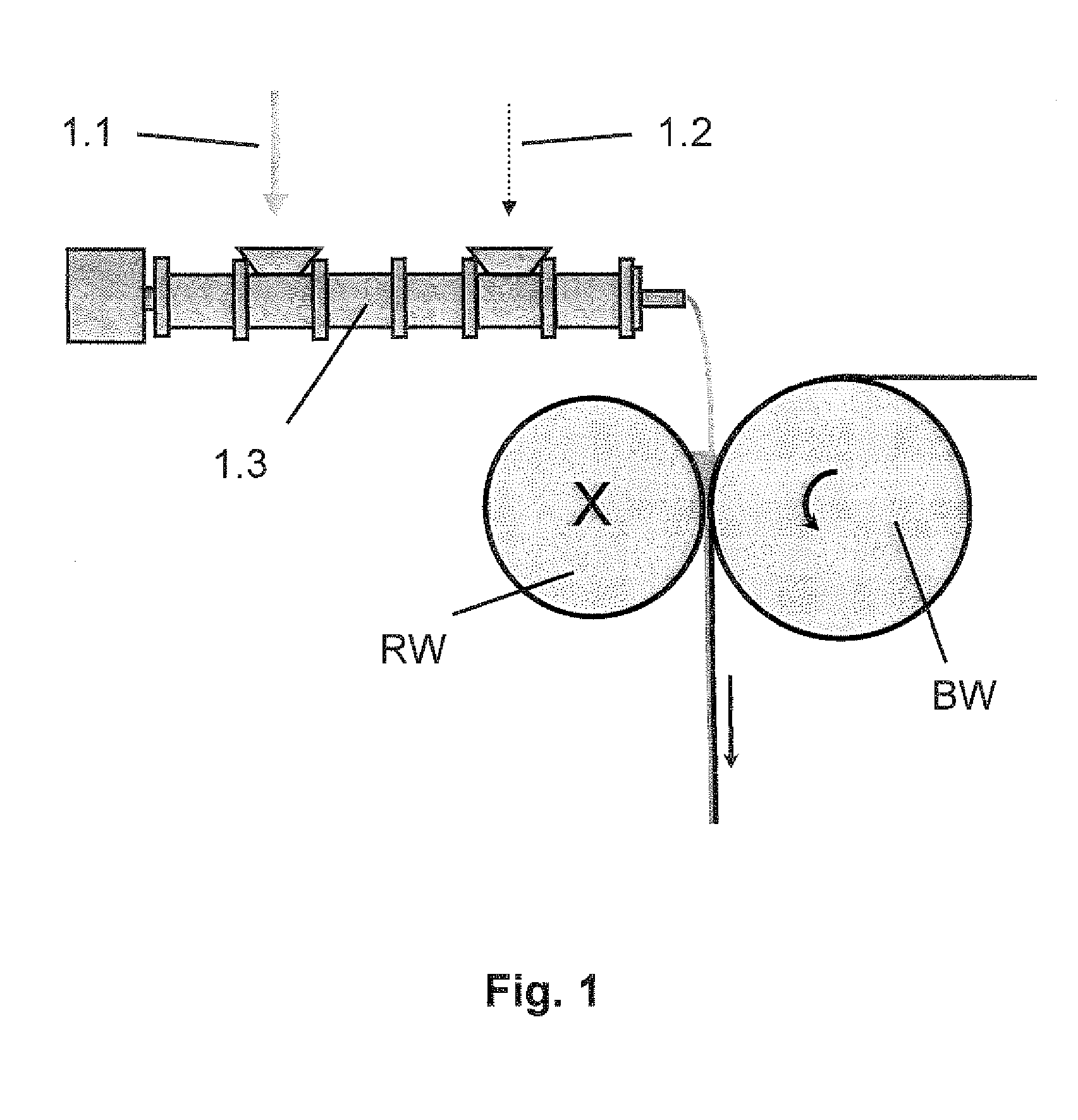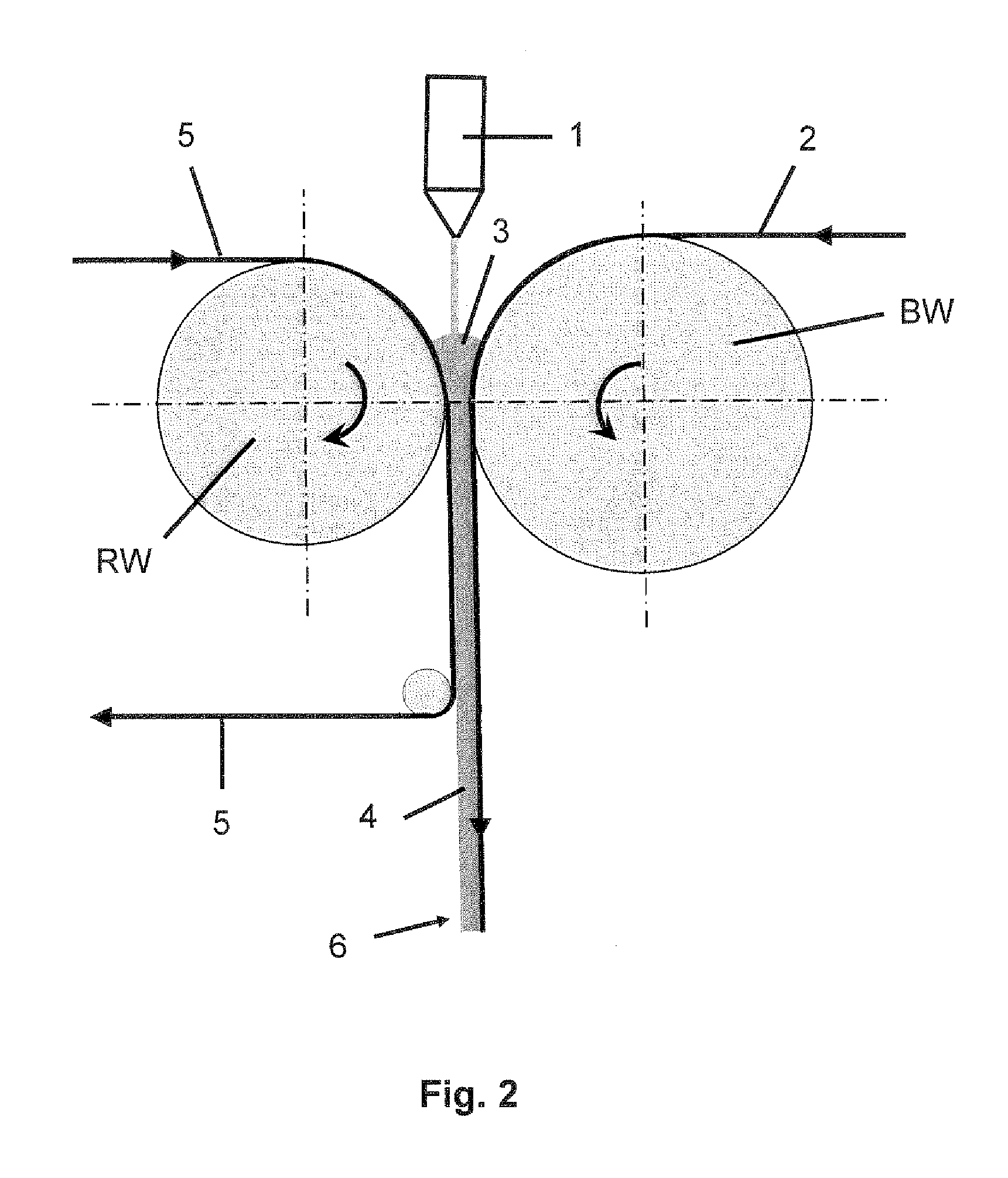Method for producing an adhesive strip comprising a thermally cross-linked acrylate hot-melt adhesive layer
a technology of thermal cross-linked acrylate and adhesive layer, which is applied in the direction of film/foil adhesives, polyurea/polyurethane adhesives, special surfaces, etc., can solve the problems of low efficiency in the case of resin-modified acrylate compositions, limiting the thickness of coats to well below 100 m, and backing damag
- Summary
- Abstract
- Description
- Claims
- Application Information
AI Technical Summary
Benefits of technology
Problems solved by technology
Method used
Image
Examples
examples
[0156]The exemplary experiments which follow are intended to illustrate the invention without the choice of the examples given being intended to restrict the invention unnecessarily.
Test Methods:
Solids Content
[0157]The solids content is a measure of the fraction of non-volatiles in a polymer solution. It is determined gravimetrically by weighing the solution, then evaporating the volatile fractions in a drying cabinet at 120° C. for 2 hours, and weighing the residue again.
K Value (According to FIKENTSCHER):
[0158]The K value is a measure of the average size of molecules of high polymer compounds. It is measured by preparing one percent (1 g / 100 ml) solutions of polymer in toluene and determining their kinematic viscosities using a VOGEL-OSSAG viscometer. Standardizing for the viscosity of the toluene gives the relative viscosity, from which the K value can be calculated by the method of Fikentscher (Polymer 8 / 1967, 381 ff.).
Gel Permeation Chromatography GPC
[0159]The average molecular...
example b1
[0184]Base polymer P1 was concentrated by method 1 (solids content: 99.7%) and then blended by method 3 with 30% of Dertophene T 110 resin. This resin-modified acrylate hotmelt was blended by method 4 with 0.25% by weight (based on acrylate copolymer) of the trimerized aliphatic diisocyanate Desmodur XP 2410 (Bayer AG, Germany). To improve its meterability the trimerized diisocyanate was diluted in a ratio of 1 to 3 with the liquid phosphate ester REOFOS 65 (from Great Lakes, USA). The operating parameters are summarized in table 1. The processing time of the compound was 9 minutes at an effective composition temperature of 82° C. after exiting the LEISTRITZ extruder. Coating takes place on a 2-roll applicator at roll temperatures of 100° C. and an application rate of 85 g / m2 onto PET film. SAFT measurements were carried out on the adhesive tape thus produced, as a function of the storage time of the specimens at room temperature. After 5 days of room-temperature storage the crossli...
example b2
[0185]Base polymer P1, concentrated by method 1 and blended by method 2 with 30% of Dertophene T110 resin, was blended with crosslinker and coated, in the same way as in example B1. It was admixed with 0.45% by weight (based on acrylate copolymer) of the trimerized HDI polyisocyanate Desmodur N3600 (Bayer AG, Germany) by method 3. The speed of the LEISTRITZ twin-screw extruder was 50 revolutions per minute, the throughput 13.0 kg / h. The processing time was 7 min for an effective composition temperature of 85° C. after exiting the extruder. Using a roll applicator, coating took place at an application rate of 105 g / m2 onto 23 μm PET film. SAFT measurements were carried out on the adhesive tape thus produced, as a function of the storage period of the specimens at room temperature. After 5 days of room-temperature storage the crosslinking of the specimen is virtually complete and the SAFT slip travel reaches a stable level at about 540 μm. After 5 days of room-temperature storage the ...
PUM
| Property | Measurement | Unit |
|---|---|---|
| temperature | aaaaa | aaaaa |
| temperature | aaaaa | aaaaa |
| temperature | aaaaa | aaaaa |
Abstract
Description
Claims
Application Information
 Login to View More
Login to View More - R&D
- Intellectual Property
- Life Sciences
- Materials
- Tech Scout
- Unparalleled Data Quality
- Higher Quality Content
- 60% Fewer Hallucinations
Browse by: Latest US Patents, China's latest patents, Technical Efficacy Thesaurus, Application Domain, Technology Topic, Popular Technical Reports.
© 2025 PatSnap. All rights reserved.Legal|Privacy policy|Modern Slavery Act Transparency Statement|Sitemap|About US| Contact US: help@patsnap.com



